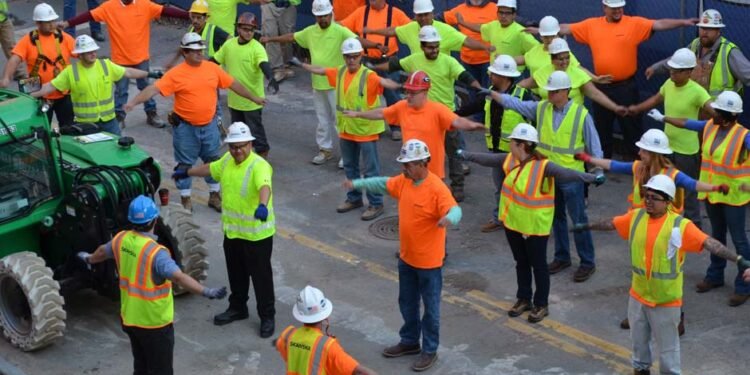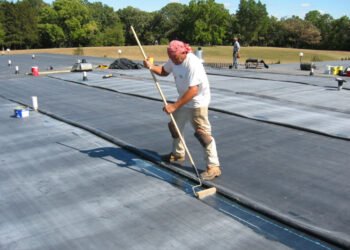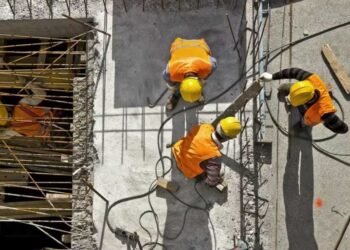Knowing how to protect yourself and your team is crucial when working on a construction site, whether you are experienced or new to the job. Construction sites are busy and ever-changing, but they can also pose serious risks, and sudden accidents can occur. To ensure safety, we have created a detailed guide outlining ten vital health and safety training that all construction workers should undergo.
Although construction sites can be thrilling, with skilled workers collaborating to create impressive structures, it is important to prioritise safety above all else. Every job site, from complex infrastructure projects to towering skyscrapers, poses its own set of dangers and potential risks.
The focus of this blog post is to examine the ten most important health and safety trainings that can effectively decrease the occurrence of accidents and injuries on construction sites. Regardless of the specific trade, whether it be carpentry, general construction, or electrical work, these trainings have been developed to provide workers with the necessary skills and knowledge to navigate potential hazards in a safe manner. We firmly believe that by investing in proper training, construction workers can construct impressive structures while fostering a strong safety culture.
10 Essential Health and Safety Trainings
1. Slips, Trips and Falls Training
Imagine a scenario where a construction worker is hurrying across a slippery surface and ends up slipping and falling in an awkward manner. Although slips, trips, and falls are frequent accidents on construction sites, they can be easily avoided by undergoing slips, trips and falls training. Workers can be trained to recognise potential hazards, keep their work areas clean, and wear suitable footwear. Adopting a safety-oriented mindset and adhering to safe practices can greatly reduce the likelihood of such accidents.
2. Scaffold Safety Training
The use of scaffolds is essential in construction projects as it allows workers to reach elevated areas. However, improper use of scaffolds can lead to hazardous situations. To ensure safety, workers must undergo scaffold safety training, which includes learning how to erect, dismantle, and use scaffolds properly. The training also covers crucial topics such as inspecting scaffold components, securing guardrails, and wearing harnesses when necessary. With this knowledge, workers can perform their tasks confidently and with minimal risk.
3. Personal Protective Equipment (PPE) Training
The final defence against potential dangers on construction sites is Personal Protective Equipment (PPE). It includes items such as hard hats, safety goggles, and ear protection, which can prevent severe injuries. However, more than simply wearing PPE is required; workers must choose the appropriate equipment for each job and ensure that it fits properly. PPE training highlights the significance of donning and upholding protective gear to protect the well-being of workers.
4. Electrical Safety Training
In contemporary building practises, electricity plays a crucial role but can pose a fatal threat if not handled properly. To prevent mishaps like electric shock and electrocution, workers receive training on electrical safety, which encompasses information on safe usage of electrical equipment and tools and emphasises the significance of implementing lockout and tagout procedures. This training empowers workers to work with electrical systems confidently while taking all necessary precautions.
5. Lifting Operations Training
Improper lifting techniques can result in back injuries and musculoskeletal problems, which is why it is crucial for construction workers to undergo lifting operations training. This training focuses on proper lifting methods, highlights the significance of using lifting equipment when necessary, and educates workers on how to determine the weight of objects before lifting them. Workers can safeguard their health and enhance job efficiency by following safe lifting practices.
6. Water Safety Training
Workers need to be ready for the particular hazards that arise when working on construction sites near bodies of water. Water safety training is necessary to teach workers about drowning risks, the proper use of life-saving equipment, and protocols for working near water. This training also covers swift water rescue techniques to enable prompt response during emergencies. With water safety training, workers can remain alert and well-equipped while working near water bodies.
7. Fire Safety Training
Construction sites are susceptible to fire hazards that can pose a threat to human life and cause substantial damage to property. To prevent fires, workers must undergo fire safety training, which includes learning how to use fire extinguishers, devising evacuation plans, and being aware of potential fire hazards. Conducting regular fire drills and instructing workers to gather at designated locations during emergencies are additional measures to ensure preparedness for such situations.
8. Excavation and Trenching Safety Training
Proper training is essential for ensuring safety during excavation and trenching activities, which are commonly performed on construction sites. This training covers topics such as ground stability, various soil types, and appropriate shoring and shielding techniques. Additionally, workers are educated on entry and exit protocols for trenches and how to respond in the event of a cave-in. Workers can approach these tasks with the necessary knowledge and caution by providing excavation and trenching safety training.
9. Confined Space Entry Training
Limited entry and exit points and potential air quality issues make confined spaces, like storage tanks or underground tunnels, dangerous. To minimise risks, workers need to be trained to identify confined spaces, evaluate potential hazards, and follow safety protocols while working in these environments. Proper training ensures that workers can work safely in confined spaces.
10. Hazardous Materials Handling Training
Construction sites often encounter dangerous substances like solvents, paints, and chemicals. It is important to handle these materials properly to avoid accidents and exposure to harmful chemicals. Workers can learn how to identify and store hazardous substances safely and follow appropriate disposal procedures through hazardous materials handling training. This training helps workers reduce the likelihood of spills or accidents with hazardous materials.
Conclusion
To ensure a safe working environment at construction sites, it is crucial to provide workers with necessary health and safety training. The ten trainings offered cover various risks and hazards, equipping workers to handle any challenges that may arise. By investing in adequate training, construction companies can prioritise the welfare of their workforce and improve productivity and efficiency. It is important to remember that safety should be a practice and a way of thinking.












